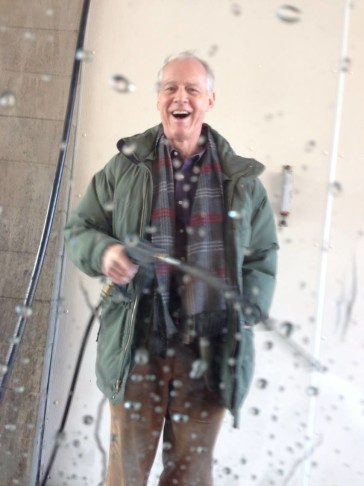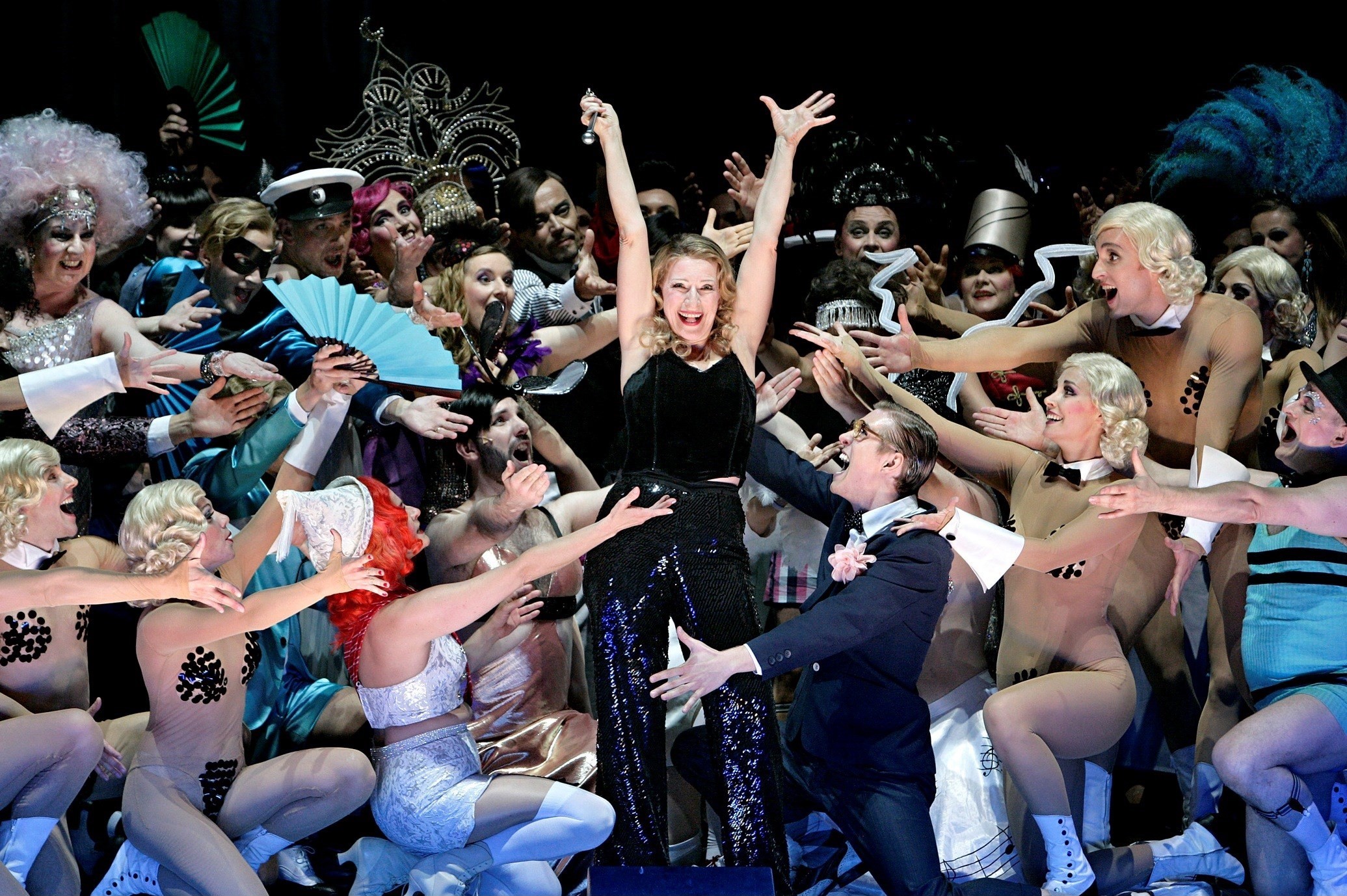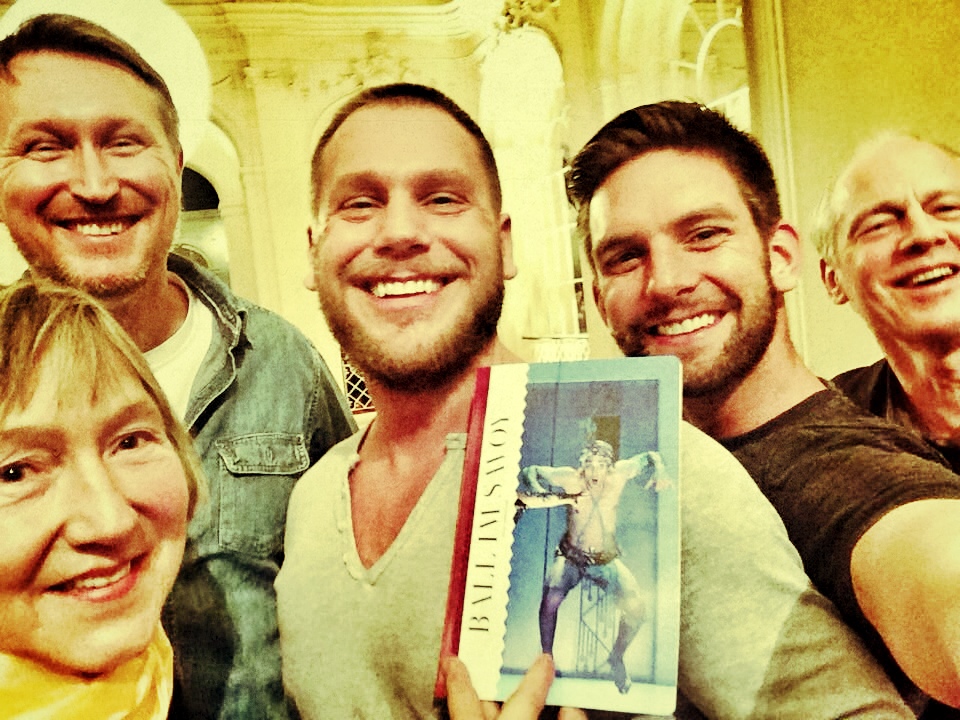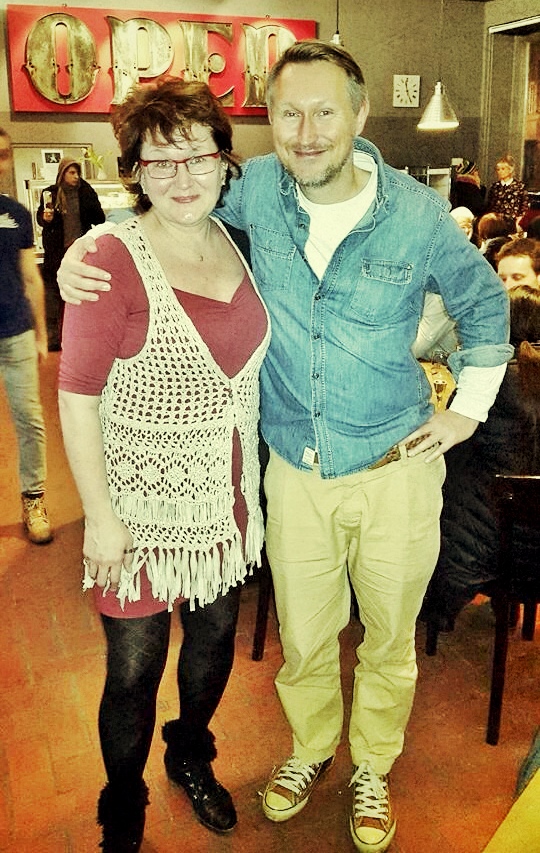Richard C. Norton
Operetta Research Center
28 January, 2015
Richard C. Norton, New York City based author of A Chronology of American Musical Theater, regular contributor to the Operetta Research Center (of course) and correspondent for Blickpunkt Musical, is in Berlin right now. He flew to Europe to attend the first operetta festival at the Komische Oper. Having arrived Friday afternoon, he has since delved head-on into the local operetta scene, with mixed, surprising, yet mostly enthusiastic results. Here is his first person singular narrative, or at least part 1 of it.

Richard Norton, operetta and musical theatre expert from New York.
After a lousy Friday in Berlin, arriving fresh from the US via Paris, a first day on jet-lag and an awful performance of Offenbach’s La belle Hélène (that basically threw the entire plot of the show overboard and offered nonsensical camp instead), everything has been wonderful since. The Spanish-owned Hotel Melia, where I am staying, is terrific. My view of the Spree and Friedrichstraße from my room on the 6th floor is charming. In a weird way (that must only be incomprehensible to Germans) the luxury restaurant Grill Royal, opposite at water’s edge, is flashing a ticker tape message that says “Capitalism Kills Love.” Well, they must know.
My hotel on Friedrichstraße is only four blocks walking from the Komische Oper, the Pergamon and several other museums, the Unter der Linden boulevard and the Kunst & Nostalgia market alongside the river Spree where I found dozens of rare LPs, CDs and DVDs.
But what already made the trip to Berlin worthwhile was Saturday night’s performance of Ball im Savoy, Paul Abraham’s 1932 operetta which premiered at the Große Schauspielhaus Berlin, originally located right opposite from my hotel room on the other side of the Spree, next to the current Berliner Ensemble. Even though I had seen a TV broadcast of this Komische Oper production of Abraham’s last Berlin hit on a DVD copy, only now – with English supertitles on the back of the chair in front of me – did it all make sense to me.

Dagmar Manzel in “Ball im Savoy”, Komische Oper Berlin. (Photo: Iko Freese/Drama Berlin/Komische Oper)
The overture starts with a male quintet a capella, followed by a very funny b/w shadow puppet narrative of a round-the-world tour which is the honeymoon of the two lead characters. The production is staged plainly in black and white deco, with platforms and curtains, the brilliant colors are reserved for the costumes. The operetta tells the story of the wealthy Marquis de Faublas and his wife Madeleine (a knockout star-turn by Dagmar Manzel) who both return from a year-long honeymoon. On their first night back, the Marquis leaves to visit an old flame at the ball at the Savoy hotel, followed by his wife in disguise. All sorts of intrigues follow with a Turkish attaché called Mustafa Bey (Helmut Baumann), an American jazz composer named Daisy Darlington (Sarah Bowden), an Argentine dancer Tangolita (Agnes Zwierko) etc.
Madeleine’s betrayal and hurt is writ and sung large.The triumphant resolution to the infidelity of her husband and all of this nonsense is unexpectedly affecting.
Her supposed lover Celestine (Dennis Dobrowolski) describes her underwear to her husband; all is forgiven, as the husband and wife both know she doesn’t wear any underwear.
The comic absurdities of the plot are but a frame for a memorable score of solos, duets and flashy production numbers choreographed by Otto Pichler. And the Tangolita number is an ear-worm I can’t get rid of.
And what a terrific score! Many, though not all of the songs begin with a solo piano introduction, played by conductor Adam Benzwi, then build to a fuller orchestration. This has the remarkable effect of blending dialogue seamlessly with the music, and compelling the audience to listen closely. I later remarked on this to the conductor, whom we met in the Kantine. He was pleased and surprised I’d noticed. I don’t know whether the original orchestrations for intros are lost, but Adam said it was his deliberate choice to play them in this way, as Pal Abraham generally did not write out introductions, but expected his conductors to improvise (jazz-style). I find this hard to believe …
But the Tangolita song, Madeleine’s soliloquy “Was hat eine Frau von der Treue,” the exuberant Ball at the Savoy waltz, “I Think I’m in Love with My Wife,” “Toujours l’Amour,” and several others now haunt my brain.
As if that weren’t enough, director Barrie Kosky has interpolated “Der schönste Gedanke,” “Niagara-Fox,” “In deinen weißen Armen,” “My Little Boy,” and “Pardon, Madame.” The tune-stack is simply dazzling.
While we were clapping and cheering at the end during curtain calls, after more than three hours of jazz operetta heaven, my friend Kevin Clarke told me “Get ready for the big finale.” After all the bows, Dagmar Manzel stepped forward, out of character, and bid us all pay tribute to Pal Abraham. She lead the company in a breathtakingly spare and unaccountably moving “Good Night”.
Operetta was triumphant!

A joyous night at the operetta: Richard Norton (r.) with Florian Klein (author of “Porn – The Musical”) and his friend Sebastian, Kevin Clarke (l.) and Mrs. Clarke.
I look forward to seeing the show again this week with the alternative cast for Daisy, Katharine Mehrling. I was already told that she is rather spectacular in this role. I find it hard to imagine that Ball im Savoy can be done even more spectacularly than the performance I saw Saturday. But I am open and ready for surprises. Stay tuned.

Chatting with Agnes Zwierko in the Kantine: ORCA’s Kevin Clarke and the Tangolita of everyone’s dreams, way past midnight.
All images by Iko Freese are from www.drama-berlin.de (Agentur für Theaterfotos).
